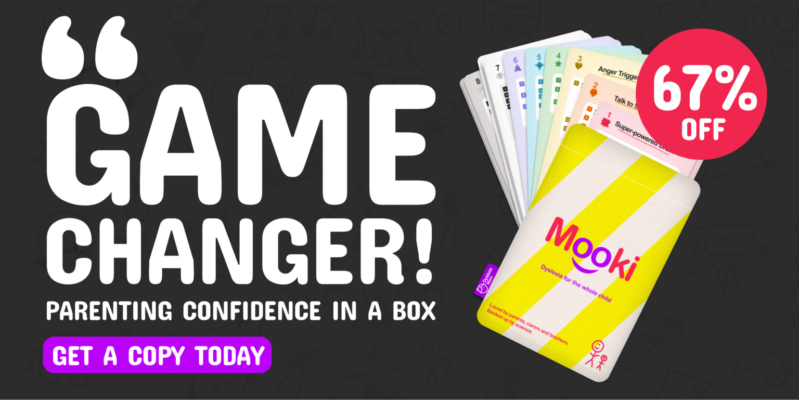Your basket is currently empty!
Welcome to the “Manage anger” course. Learn how to help a dyslexic child with anger management.
Try 3 activities, they take just 10 minutes per day.
This easy to follow course will help you:
- Understand the child’s anger triggers
- Get the child to understand their own feelings
- Talk more to the child about what is making them feel unhappy.
What causes angry outbursts?
To start, understand what causes dyslexic children to have angry outbursts.
A dyslexic child may struggle to control their angry outbursts. Behind their anger can be:
- Fear
- Frustration
- Sadness
- Tiredness
- Feeling overwhelmed
Research has shown that dyslexic children feel and express their emotions more intensely. They may bottle up their feelings, which can lead to angry outbursts.
The image of the angry iceberg below illustrates how many negative emotions may lie beneath the surface of angry outbursts.
.jpg)
About anger management activities
Talking about emotions can help a child with negative feelings and relieve stress.
The activities below are designed to help you do this. They can be completed using the links to the activities taken from Mooki cards.
Follow the top tips below when completing the activities with a dyslexic child:
- Plan to complete all three activities in 1 week. What days will you do the tasks?
- Do them with the child, in a quiet place with no distractions.
- Do each task on different days, to stop the child becoming overwhelmed.
Remember, do not rush in too quickly to solve the child’s problems, sometimes it is good to listen.
Activity 1: How are you feeling today?
This activity will help a dyslexic child to show and understand how they are feeling.
Use the Emoji Checkin card to complete this activity, click on the card below to learn more.
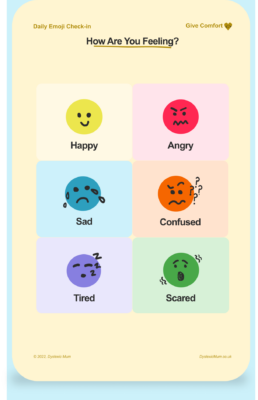
When using the card follow the top tips below:
- Ask the child to show how they are feeling, by pointing at the “Emoji Checkin” card.
- Ask the child to record this feeling on a piece of paper. They can draw a face, picture or colour.
- Ask if anything has made the child feel that way today. The “emoji checkin” can be repeated for 3 days.
Below is a worksheet that can be drawn or printed and used during the task. The example below has been completed with a dyslexic child.
.jpg)
Activity 2: Let’s talk anger
This activity will help the child understand what triggers their angry feelings.
Use the Angry Triggers card to complete this activity, click on the card below to learn more.
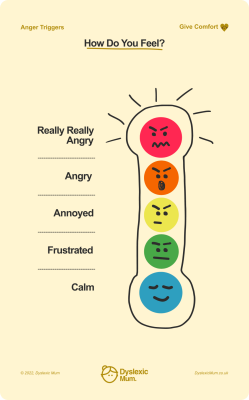
When using the card, follow the top tips below:
- Complete the “Angry Triggers” card to start a conversation.
- Use a pen and paper to record what makes the child feel angry.
- Ask the child if anything else makes them feel angry and write this down.
- In task 3 there will be more opportunities to talk about solutions to their anger.
Below is a worksheet that can be drawn or printed and used during the task. The example below has been completed with a dyslexic child.
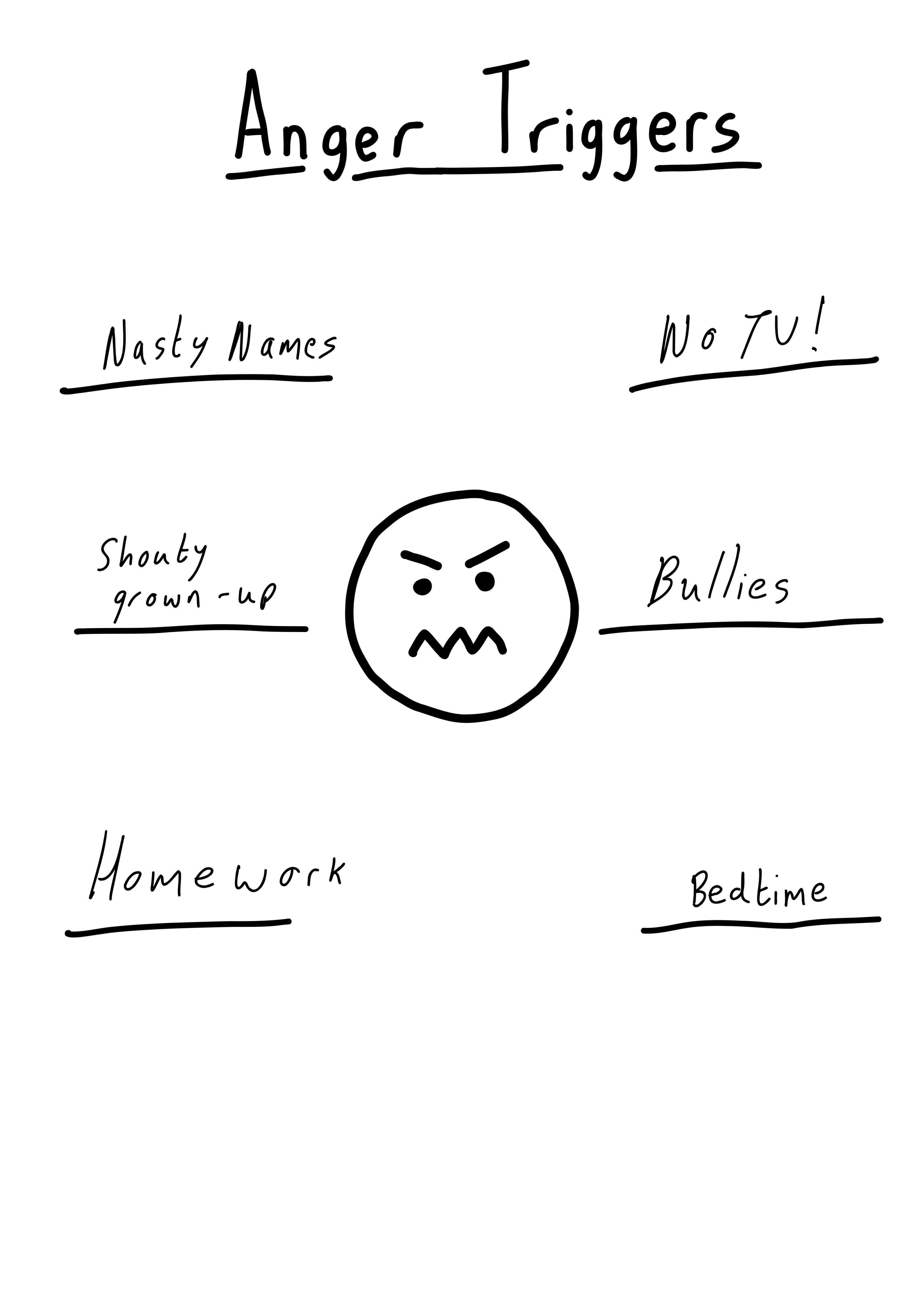
Activity 3: Can we talk more?
This activity will help to give a dyslexic child control over negative situations and feelings.
Use the Stinkin Thinking card to complete this activity, click on the card below to learn more.
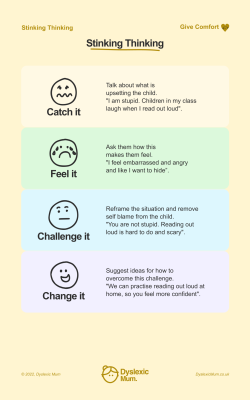
When using the card, follow the top tips below:
- Talk about something that has made the child feel angry, see task 2.
- Use the ‘Stinkin’ Thinking’ card to talk more about what is causing the angry feelings.
- Write on paper 2-3 things that can be changed to help them. For example, having hobbies outside of school.
- This activity can be repeated anytime the child is feeling unhappy.
Below is a worksheet that can be drawn or printed and used during the task. The example below has been completed with a dyslexic child.
.jpg)
How did the course help?
Answer the questions below to help you understand how helpful the course has been:
- Is the child feeling any negative emotions?
- What is causing the child to feel angry?
- What will help the child avoid getting angry or unhappy?
Dyslexia courses
Join the following dyslexia courses next:
- Improve wellbeing
- Build confidence, self-esteem and ambition
- Have you understood?
- Get organised and build independence
- Improve motivation by using healthy rewards
Helpful articles
- My dyslexic 7 year old is angry outside school!
- Social and emotional problems related to dyslexia
- 3 Tips to help dyslexic child with anger
Everything you need to help a dyslexic child. 56 cards with 10 minute activities. Perfect for using at home or in the classroom. Order your “Mooki Cards” here!
